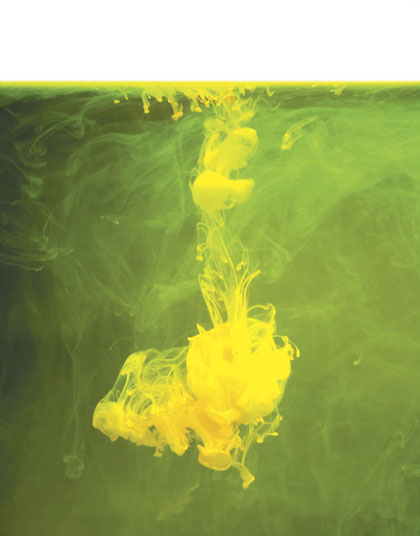Security of supply is a major issue for water companies all over the world who spend millions on leakage and burst reduction. In the United Kingdom, Pressure Reducing Valves (PRVs) are the preferred option of the industry. However, IVL Flow Control says water companies are still too vulnerable to something potentially fatal or incapacitating getting in to the network.
THE NEED FOR SPEED AND SAFETY
The UK’s drinking water is at far too great a risk from potential contamination of supply by terrorists, with current systems simply not quick enough to contain a chemical or biological attack. According to IVL Flow Control, water companies are still leaving themselves extremely vulnerable, with the present District Metered Area (DMA) structures too slow to close down or divert something potentially fatal or incapacitating in the network.
“What’s in place at the moment isn’t anywhere near quick enough to cope,” says Craig Stanners, director of IVL Flow Control. “Those wishing to cause damage to our drinking water would laugh at our response that we’re waiting five days for results to come back from the lab. By then, it will be too late.”
INTELLIGENT REZONING
Instead, claims Stanners, a water quality monitoring system coupled to strategic control nodes/valves is the answer—so that in the event of a water quality failure or terrorist attack, intelligent rezoning would automatically prevent unwanted biological content or chemicals reaching the distribution network.
“We’re currently working on a major industrial installation, where we’ve designed in a preventative valve and penstock contamination system to eliminate any risk whatsoever of hydrocarbons entering the local sewer network,” he adds, “yet we aren’t being called in to protect the public from a potential terrorist wave of water-soluble biological or chemical contaminants. This can’t be right.”
RECOGNITION OF MODERN THREATS
Stanners cites Al-Qaida’s threats to poison drinking water in American and Western cities, as well as arrests made in Jordan of Iraqi agents who attempted to poison the water supply that serves American troops in the eastern Jordanian desert.
“As it stands,” continues Stanners, “the contaminant can be detected as it enters the water treatment plant, and even in the very best-case scenario it would then be shut down while the harmful bacteria is neutralized. This would usually result in a ‘boil your water’ alert, but this delayed reaction caused by outdated technology means that the contaminant is undetected and people begin to get sick or die.”
Stanners also points to two recent high profile events where power tools had been used to commit major offences, namely the £60M Hatton Garden jewellery heist in London and the escape of two convicted murderers in New York.
“It’s well within a terrorist’s capability to use power tools to drill straight into a trunk main,” he says. “It’s quick—whereas identifying the type of illness and the actual source of the contamination would take a substantial amount of time. The technology to intelligently shut systems down without the public coming to harm is now available, so one has to ask, why take the risk?”

INTRODUCING THE DEMAND CONTROL VALVE
Stanners is well aware that his views may not be popular throughout the industry, but he believes the issue is too important to ignore—and he is not alone: “Despite some negativity, it is heartening to hear many in the industry recognize that there should be some reviews and that as much as any of us don’t want to think about or talk about terrorism, it is, unfortunately, part of the world we now live in.”
“What we need to consider though is a more intelligent type of valve that checks to see if water is available upstream of its location before supplying the required downstream demand, which is why we designed the Demand Control Valve.”
“Are you really happy with water quality readings currently taken with a three-to-five-day cultured period for biological results, as so many are?” Stanners asks. “Shouldn’t it be taken at key locations throughout a trunk main system, down to DMA levels so that a problem can be localised and isolated immediately? Or would you rather still wait and then send out a team of people to deal with a problem, by which time it could be too late?”
TLF MONITORING
On top of the normal water quality parameters such as turbidity, IVL has added to its system a Tryptophan like fluorescence (TLF) monitor that monitors the optical space based on its fluorescent properties. Within this optical space there is a specific area that highlights the presence of free amino acids, which are present within any organic matter or bacteria that is present within the water. This is then relayed back to either a RCC (regional control room) or directly to the strategic control nodes or the intelligent demand control valves within the network that can then autonomously close or restrict the flow preventing the contamination of the rest of the distribution network. Combining this with an autonomous network control theory, other control nodes/valves will then autonomously open and supply flow from other parts of the network ensuring proper security of supply. ◆
IVL Flow Control, part of Ham Baker Group, will be making its debut at WEFTEC (Booth # 5639). IVL Flow Control provides solutions for a range of water utilities and industrial markets. For more information, visit www.ivlflowcontrol.co.uk.
____________________________________________
MODERN PUMPING TODAY, September 2015
Did you enjoy this article?
Subscribe to the FREE Digital Edition of Modern Pumping Today Magazine!
![]()


